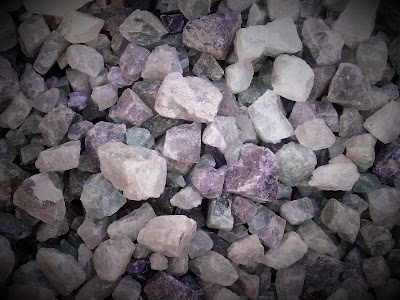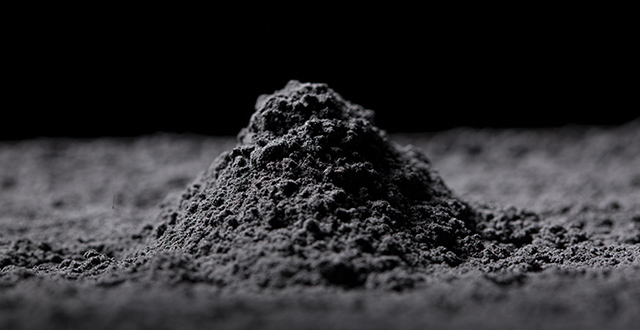Potassium Silicate Prices: Market Overview and Regional Insights
Potassium silicate, a versatile silicate salt, is widely used in industrial applications ranging from detergents and paints to adhesives, paper manufacturing, and water treatment. Its significance in both industrial and consumer applications makes its pricing a crucial metric for manufacturers, suppliers, and buyers alike. Tracking Potassium Silicate Prices provides insights into market dynamics, demand patterns, and supply constraints.
Track Real-Time Potassium Silicate Prices:- https://www.chemanalyst.com/Pricing-data/potassium-silicate-1305
In Q2 2025, the global Potassium Silicate market experienced notable regional variations in price trends, reflecting local demand-supply balances, manufacturing capacities, and downstream industry activity. This article examines these developments across North America, APAC, and Europe.
Global Potassium Silicate Market: An Overview
Potassium silicate is primarily manufactured via high-temperature reactions between silica (often quartz) and potassium carbonate. The resulting amorphous silicate is widely used due to its water solubility, adhesive properties, and ability to act as a binder or corrosion inhibitor.
The market for potassium silicate is influenced by several factors, including:
- Raw material availability: Silica and potassium carbonate costs impact production economics.
- Industrial demand: Paints, detergents, adhesives, and water treatment sectors drive consumption.
- Regional supply dynamics: Local production capacities and import-export trends shape prices.
- Macroeconomic factors: Energy costs, logistics, and inflationary pressures can affect spot prices.
As of Q2 2025, global potassium silicate prices exhibited mixed trends, with North America seeing upward momentum, while Asia-Pacific and Europe faced price softening due to oversupply and moderate downstream demand.
North America: Rising Prices Amid Robust Demand
In North America, the Potassium Silicate Spot Price increased quarter-over-quarter in Q2 2025, contributing to a firmer regional Price Index. This trend is indicative of stronger market demand and tightening supply conditions in the region.
Monitor Live Potassium Silicate Prices:- https://www.chemanalyst.com/Pricing-data/potassium-silicate-1305
Key Drivers for North American Price Increase
- Industrial Growth: The continued expansion of paints, coatings, and water treatment sectors has fueled demand for high-quality potassium silicate.
- Supply Constraints: Limited availability of key raw materials and production bottlenecks in certain facilities have tightened supply.
- Energy and Logistics Costs: Rising energy prices have contributed to higher manufacturing costs, indirectly pushing up potassium silicate prices.
- Export Demand: Increased North American exports of specialty silicates to Latin America and Europe have tightened domestic supply, supporting higher prices.
Implications for Buyers and Suppliers
For industrial buyers, the upward trend in potassium silicate prices highlights the need for strategic sourcing and early contract negotiations. Suppliers, meanwhile, may leverage stronger pricing to stabilize margins amid rising input costs.
Asia-Pacific (APAC): Softening Prices Amid Oversupply
Contrary to the North American trend, the Potassium Silicate Spot Price in South Korea declined by 10% quarter-over-quarter in Q2 2025. This decrease reflects a softer regional Price Index driven by oversupply and subdued demand.
Factors Contributing to Price Decline
- Excess Production Capacity: Several APAC manufacturers increased production capacity to meet growing export demand, leading to a temporary oversupply in the domestic market.
- Moderate Downstream Consumption: While industries such as detergents, paper, and adhesives continued operations, overall demand growth slowed compared to prior quarters.
- Competitive Imports: South Korea’s market experienced higher competition from imported potassium silicate, pressuring domestic producers to reduce prices.
Regional Outlook
The APAC market is expected to gradually stabilize as export demand recovers and domestic industrial consumption strengthens. Strategic inventory management and demand forecasting will be essential for suppliers to navigate short-term price volatility.
Europe: Slight Decline Amid Weakening Demand
In Europe, the Potassium Silicate Spot Price in Germany declined by approximately 1.0% quarter-over-quarter in Q2 2025. The softer Price Index reflects weakening downstream demand alongside adequate supply levels.
Market Influences
- Downstream Demand Softness: Key industries such as paints, coatings, and adhesives reported moderate production activity, reducing immediate demand for potassium silicate.
- Stable Supply Levels: European producers maintained steady output, ensuring supply availability and preventing sharper price fluctuations.
- Energy and Logistics: Although energy costs remained relatively high, they were not sufficient to offset the softening demand trend.
Implications for the European Market
European buyers can benefit from the slightly lower prices in Q2 2025, potentially securing cost advantages through bulk contracts. Suppliers, however, may need to balance production with demand trends to prevent margin compression.
Strategic Considerations for Market Participants
For Buyers:
- Forecast Demand Trends: Understanding industrial consumption patterns is critical to plan procurement and manage costs.
- Secure Long-term Contracts: In regions like North America, locking in supply agreements can protect against price volatility.
- Monitor Import-Export Dynamics: APAC buyers should stay alert to global trade flows that impact domestic pricing.
For Suppliers:
- Optimize Production: Align production capacity with regional demand to avoid oversupply situations.
- Focus on Export Opportunities: North America and APAC exports can help stabilize prices in local markets.
- Leverage Price Index Data: Regularly tracking regional price indices enables proactive pricing strategies.
Future Outlook for Potassium Silicate Prices
As we move into the latter half of 2025, several factors may influence Potassium Silicate Prices globally:
- Energy Market Volatility: Fluctuations in electricity and natural gas costs can impact manufacturing expenses.
- Raw Material Supply: Availability of quartz and potassium carbonate will remain a critical determinant of pricing.
- Industrial Demand Recovery: Rebound in construction, paints, adhesives, and water treatment sectors could strengthen prices in APAC and Europe.
- Global Trade Policies: Tariffs, export incentives, or regulatory changes may shift regional pricing dynamics.
Overall, while North America is likely to maintain upward price momentum, APAC and Europe may experience moderate fluctuations influenced by production adjustments and downstream demand recovery.
Conclusion
The Q2 2025 trends in Potassium Silicate Prices underscore the regional complexities of the global market. North America witnessed a firming in prices driven by strong industrial demand and limited supply, APAC saw a 10% price correction due to oversupply and moderate consumption, and Europe experienced a minor decline amidst steady supply and soft downstream demand.
For market participants, understanding these regional trends, monitoring Price Index movements, and strategically managing procurement or production are essential to navigate the evolving potassium silicate market. With industrial demand expected to recover in the coming quarters, stakeholders should anticipate both opportunities and challenges in pricing and supply chain management.
Contact US:
Email-id: sales@chemanalyst.com
Mobile no: +1- 332-258-6602
LinkedIn: https://www.linkedin.com/company/chemanalyst/
Twitter: https://x.com/Chemanalysts
Follow this LinkedIn Article: https://www.linkedin.com/pulse/potassium-silicate-prices-recent-quarterly-update-global-singh-i1adc/
.jpg)



Comments
Post a Comment